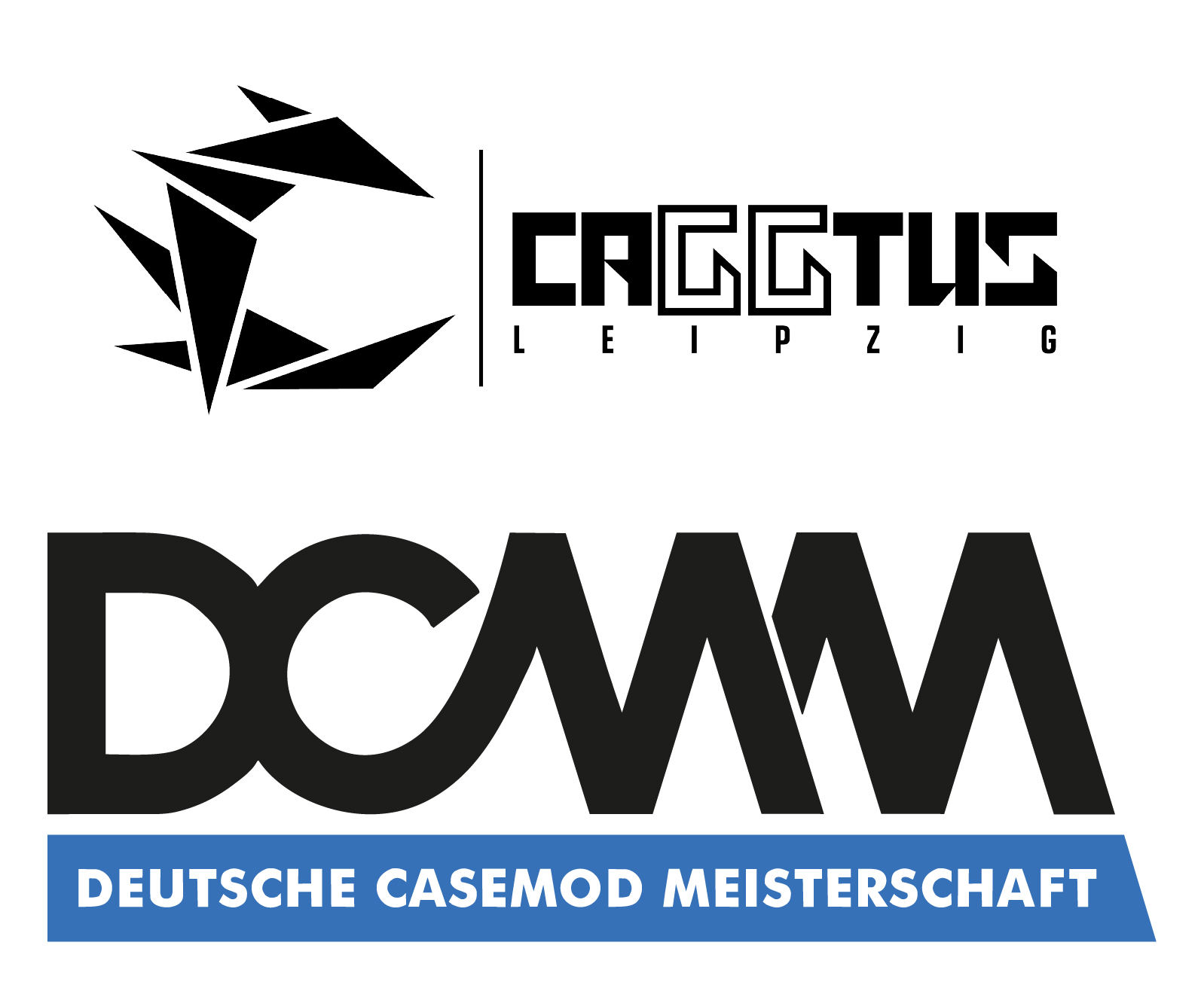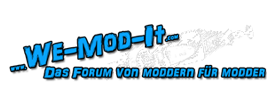§1 DCMM
- The German Casemod Championship (DCMM) is broken up into five competing groups. Group 1 - "Casemods" (case modifications) includes commercially-manufactured computer cases, modified or remodeled by the participants. Group 2 - "Casecons" (case constructions) includes computer cases which have been designed and constructed by the participant. These case constructions are not based on commercially-manufactured computer cases. The category Casecons also includes non-PC-cases, which have been remodeled to carry a computer. (e.g. suitcases, beer crates, hi-fi cases, etc.) Group 3 - "CE-Mods" (consumer electronics modifications) includes modified day-to-day electronic devices, mainly coming from the area of entertainment electronics. However, there will be no restrictions about the nature of the device, meaning constructions such as a remodeled toaster may participate as well as DVD-players or redesigned TV sets. Group 4 will be the Live-Modding-Challenge, a discipline where teams including 2 members will be granted over 20 hours to modify a regular commercial case. New in 2020 i the CAM-category (computer aided modding). For the first time, cases and parts of the mods which were machined by 3D-printer or CNC-Laser are evaluated. Special attention is paid to the design factor.
- Each exhibit from competitive categories will also enter the contest for the most spectacular creation automatically, which will be determined by a vote among the audience of the DCMM on the Dreamhack Leipzig.In addition, participants who have only been in a championship for a maximum of two times and have not yet won a titel, will take part in the "Newcomer" category.
§2 Eligibility Requirements
- Everybody is allowed to participate in the German Casemod Championship, as long as he/she is at least 14 years of age, and receives approval to participate in at least one of the competitions.
- Participants have to be responsible for most of the work and effort put into the modification of their device, otherwise they will be excluded from the DCMM by the jury.
- Since the spirit and the purpose of each Casemod or Casecon is accommodation of a PC, each case at the DCMM has to come with a fully working computer inside. The modification itself must not prevent the construction from working properly. In case of doubt about the functionality of an exhibit, the jury reserves the right to review the operational capability, and, if not given, to exclude the Casemod or Casecon from the competition. In addition, the original electrical device used for a CE-Mod still has to work properly. Casemods created during the Live-Modding-Challenge are excluded from this rule.
- CE-Mods coming with illegally modified hard- or software (circumvention of copy protection mechanisms for consoles, Pay-TV decoders without a subscription for DVB-devices, etc.) are excluded from participation at the DCMM. Also so-called pure "software-mods" where the firmware of a device is altered without any technical modifications are not allowed at the DCMM.
- Each exhibit also has to meet fundamental work-protection and security requirements. Improper manufacturing that poses as a threat to humans and hardware (sharp edges, blank cables, open power supply units, leaking water cooling units, etc.) may lead to a disqualification by the jury.
- Each participant of the DCMM has to register himself on this website until the application deadline.
- In case the amount of applications exceeds the areal capacities, there will be a pre-evaluation by the jury, based on the descriptions and images provided for all exhibits online. In this case, all participants will be notified via eMail in a timely manner, to find out if their exhibit has been approved for the DCMM. Only exhibits which pass the pre-evaluation, and whose constructors receive a corresponding eMail will be allowed at the event. Each participant is responsible for receiving this eMail (acceptance or rejection). In case a pre-evaluation is not necessary, each exhibit registered will be approved automatically, and all participants will be notified via eMail. Whether there is going to be a pre-evaluation process or not will be announced on this website, right after the end of the registration period.
- Each participating exhibit has to be present at the area of the DCMM for the evaluation and the following winner's ceremony. The participant only has to be present during the evaluation, to make him- or herself available to the jury for questions and explanations about their exhibits.
- Each participant is allowed to enter with one exhibit for each category. In case of doubt, the jury will classify the exhibit and assign it to a group. In case there are more applications than open slots for one or more categories, decisions made during the pre-evaluation process will favor participants who enter one exhibit only, to enable as many modders as possible to participate at the DCMM. This means that if someone applies for several different categories, he or she might only receive approval for one of the exhibits.
- Exhibits which already finished top-three in their category at a former DCMM, or won the audience vote for the most spectacular creation, are excluded from the competition. This exemption also applies to members of the DCMM-team and their relatives. However, if this top-three finishing case has been remodeled or changed in a major way, the jury can decide to allow it in the competition. Participation in the DCMM with a case that has once before participated in the Live-Modding challenge is not allowed in general.
- For the categories Casemod, Casecon, and CE-Mod, only one person for each application can enter the competition. In case several persons have been involved with the construction of the exhibit, still only one of them can participate as a representative. For the Live-Modding-Challenge, up to 2 persons are allowed for each team.
§3 Live-Modding-Challenge
- Teams consisting of 2 members can compete. Every team will receive the exact same case-model to start with. The goal of the Live-Modding-Challenge is to create a Casemod based on the original case (a Casecon using parts of the original case will not be accepted). Teams are allowed to work on their exhibits from Friday to Sunday. The concept and tools have to be chosen in advance. The case will be provided and passes into the ownership of the team, during and after the competition.
- The case including the power supply unit will be picked by the organizer. High-resolution images and dimensions are available on request.
- Each team has to include at least one experienced modder. Also a rough concept has to be provided during the registration for the DCMM, which must not change majorly during the competition.
- All necessary materials have to be obtained by each team individually. There will not be any restrictions in terms of tools allowed, as long as they can be used on site in a reasonable manner. Raw materials must not be processed before the competition, this especially applies to cuttings, decoration, electric circuits, air-brush-elements, etc. The jury may check your supplies before the contest to verify no one is breaking this rule. Boards (such as wood, acrylic glass, metal, etc.) are excluded from this restriction, as they can be cut for transportation purposes. However, carving out shapes that will later be used for the Casemod is prohibited. Additionally, no parts from other Casemods may be used.
- For preparation purposes, all types of planning and conception, such as sketches, patterns, stencils, models, or painted patterns are allowed. Also self-constructed tools and auxiliary constructions may be prepared in advance, however, they must not be integrated into the Casemod.
- Computer-hardware (CPU, etc.) is not being provided for this competition, therefore no working computer has to be presented in the Casemod. Personal hardware can be integrated, however, will not be considered by the jury.
- Teams are allowed to help each others and to share tools and supplies. This can also be agreed upon before the competition. Persons excluded from the Live-Modding-Challenge are not allowed to participate in any operations.
- For this competition, the same assessment criteria applies as for the Casemods category. However, since the hours of work are shorter, a more creative approach to problem solutions is of greater importance.
§4 Evaluation and winner's ceremony
- There will be one individual jury-team for each one of the evaluation categories ge, including highly-qualified and experienced representatives from the Casemodding community and/or journalists.
- Each participant is required to explain and demonstrate details of his/her exhibit which can not clearly be identified at first sight, but still belong to the concept of the exhibit and the effort of the competitor.
- To guarantee a better and more efficient evaluation, the jury-teams for Casemods and Casecons will split themselves up into two groups, which will then process the evaluation one after another. Each participant has to present his or her case twice in a row. CE-mods and Casemods crafted during the Live-Modding-Challenge will only be evaluated by one jury-team.
- The jury will discuss the performance of each exhibit internally, however, there will be no agreements about the evaluation.
- The criteria for the evaluation of the exhibits are:
- Visual appearance: Visual image and the overall impression of the exhibit
- Electronics: Range, functionality, and creativity of all self-constructed electric and electronic circuits inside and outside of the case
- Craftsmanship: The general effort and skill level of all modified parts of the exhibit, but also the quality of the implementation.
- Creativity: The idea as well as the concept behind the construction, the originality, functionality, innovations and its potential to create excitement. (The "wow factor")
- Each jury-member will assess each exhibit of his evaluation category in his sole discretion, giving out points based on the criteria mentioned above (§4.5). Also the jury members can choose to weight their points, to make sure each case receives the most appropriate individual evaluation. The final rating of each jury-member will then be the weighted average from all criteria.
- The final rating of the jury for each exhibit will be the average of all final ratings of each individual jury member.
- For the evaluation, only the exhibit and modded accessories (monitor, input-devices, etc.), as well has certain self-constructed hardware-solutions which are part of the exhibit are being reviewed. The computer's actual hardware, as well as any kind of hardware-tuning (e.g. overclocking) is not taken into consideration. Also for the CE-mod evaluation, it does not matter what kind of device was chosen.
- The winners are determined based on their evaluation category. According to the evaluation Germany's top-three Casemods, Casecons, and CE-mods will be determined, and their constructors will be crowned. Also, the three winners of the Live-Modding-Challenge will be honoured as well as the winners of special categories, if there are any. In addition, the vote of the audience will determine the three most spectacular exhibits of the DCMM and the prettiest beauty case of the exhibits.
§5 Miscellaneous
- Each participant allows pictures showing him/herself and his/her exhibit to be given out to the press for a possible publication.
- For the final placement, any recourse to courts of law is excluded.
- Fairness and sportsmanship are the highest fundamentals of the DCMM. Gravely unfair and harmful behavior against other participants or the jury - even outside the event - may lead to your exemption from the DCMM, or restrict you from entering future DCMM competitions.





